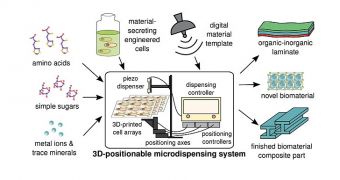You might not expect NASA to be so involved in 3D printing, especially not 3D printing that has little to do with space, but here we are, talking about 3D printed trees.
Then again, if humanity were to invent a way to 3D print biomaterials out of thin air as PhD student, Diana Gentry told it, the idea of terraforming planets would become feasible.
Long story short, Chief Scientist of Synthetic Biology at the NASA Ames Research Center, Lynn Rothschild, and his PhD student believe they can 3D print cellular arrays that can secrete organic materials like wood, bone parts, tooth enamels, etc.
“Cells produce an enormous array of products on the Earth, everything from wool to silk to rubber to cellulose, you name it, not to mention meat and plant products and the things that we eat,” Rothschild told TechCrunch.
This would, say, make it possible to create silk and wood on Mars without actually taking the silkworms and the trees there.
Right now, the researchers are only building the database of cells found in nature, and they still need to bioprint the arrays, attempting to secrete specific materials.
What's unique about their method, though, is that they want to trigger the cells to become the material they want, instead of placing organic cells into specific patterns and inducing cellular growth.
There are some difficulties though, specifically in the matter of actually achieving the desired results. The cells tend to behave differently in different directions. The biomaterials have certain properties and structures on a micro/molecular scale that stack and create emergent macro-scale properties.
Those properties evolve differently in every direction. The scientists just haven't figured out how to make the materials in a way that those properties work as they want.
“If you looked at a piece of plastic, by and large, a small piece of it is just like a large piece of it; this is not true of most biomaterials,” said Gentry.
“They have very interesting properties and structures on a micro or sometime molecular scale that stack and create these sort of emergent macro-scale properties. So they behave differently in different directions. We are trying to show that we can manufacture these materials so that those really fine-grained properties work for us.”
Basically, he's trying to create a new biomaterial, or class of materials.

 14 DAY TRIAL //
14 DAY TRIAL //